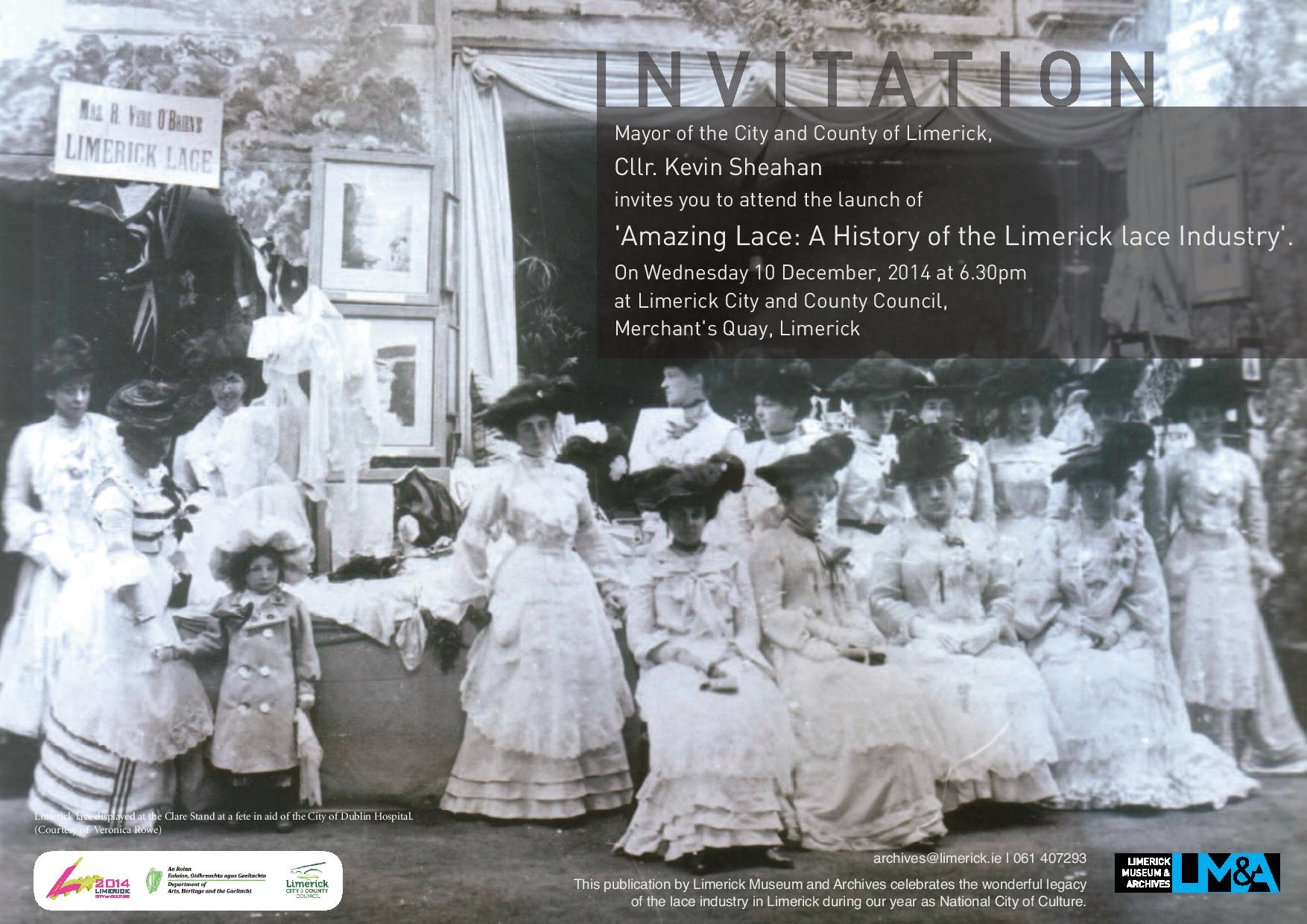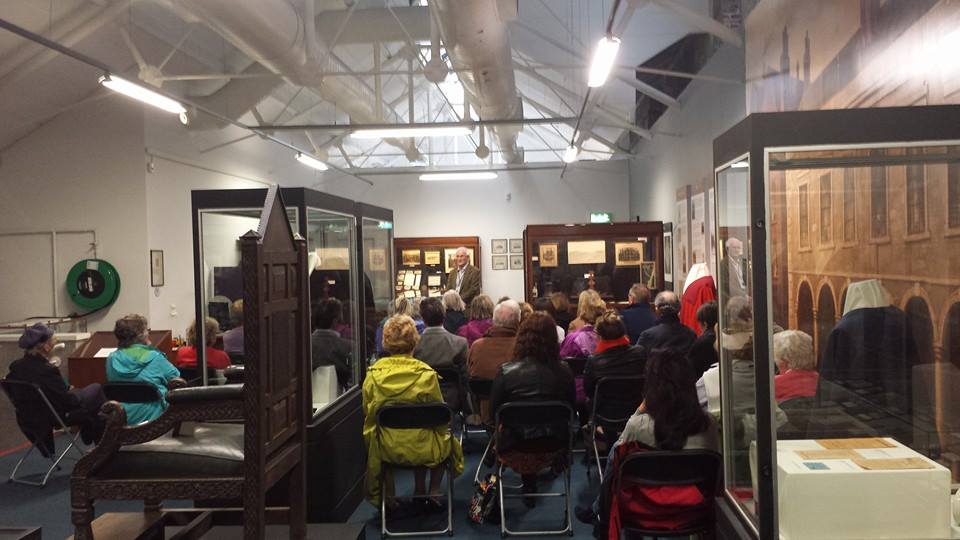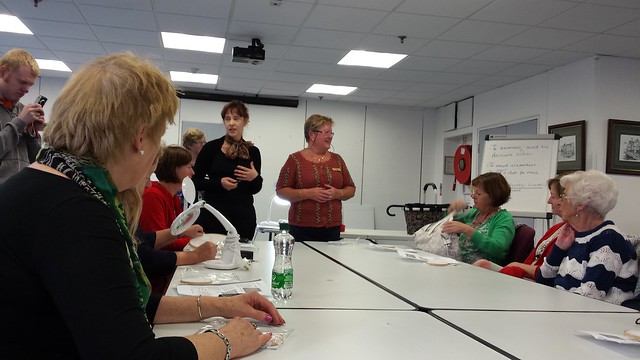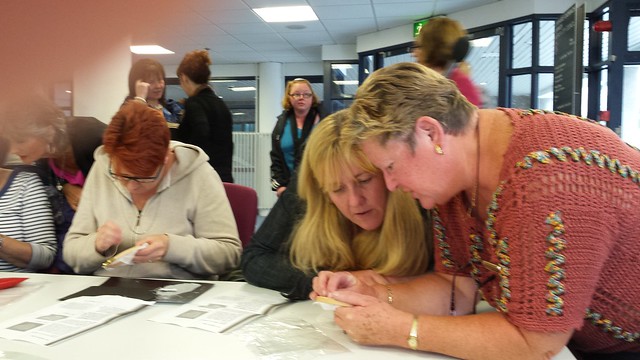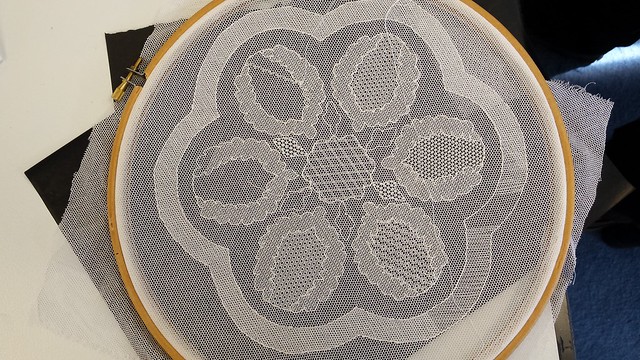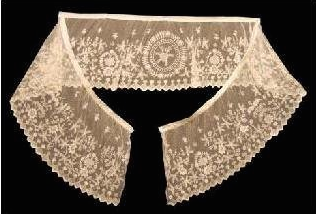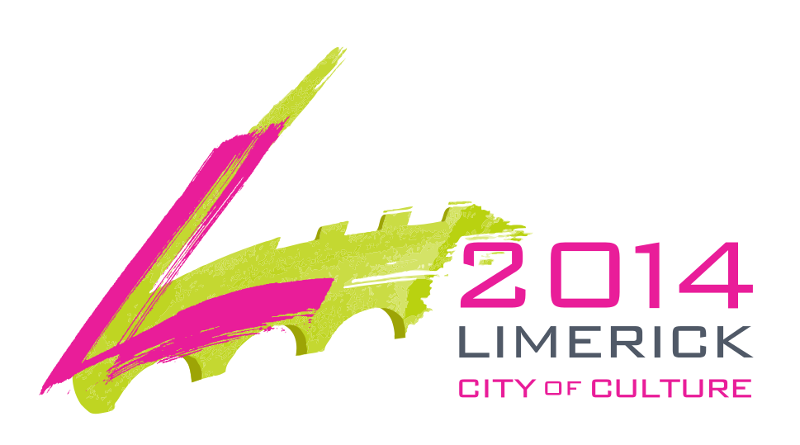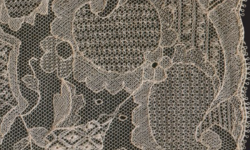
As part of National Heritage Week 2015, Limerick Museum and Archives are asking the public to bring out their lace to a show and tell event on:
Tuesday 25th August between 11am and 1pm
Exhibition Area, City Hall, Limerick.
On the day we will have lace expert Nora Finnegan, from Kenmare Lace and textile conservator Cliodhna Devitt available to give tips and advice preserving and storage. We will also have a professional photographer available to photograph the lace.
You do not need to have lace to come along on the day to listen to the stories of lace and to learn tips on how to preserve textiles.
Please share with others who may be interested in the lace industry in Ireland.
This is a free event and no booking is required.
For more details contact 061 407293 or Email archives@limerick.ie








